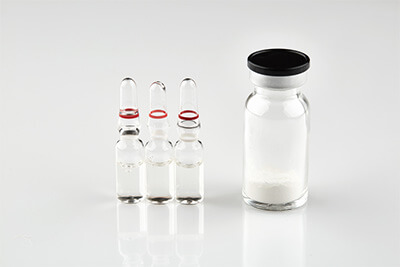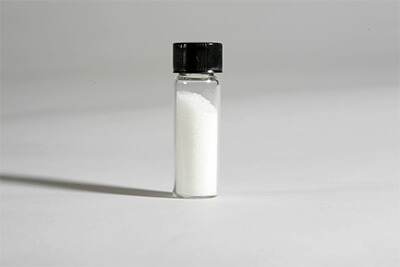Comparing GHB to GBL: What Are the Similarities and Differences?

GHB and GBL are two closely related drugs. They are often used recreationally in club settings to achieve a euphoric, disinhibiting effect and by bodybuilders to promote production of a growth hormone.
What Is GHB?
Gamma-hydroxybutyrate (GHB) is found naturally – in small amounts – in human cells. It is a neurotransmitter and also affects other neurotransmitters, including GABA (gamma-aminobutyric acid) and dopamine. At low doses, GHB inhibits dopamine release, but at high doses, it promotes dopamine release. It also increases serotonin turnover and inhibits the release of norepinephrine.
It is known on the street by many nicknames, including:
- Liquid E
- Georgia home boy
- Fantasy
- Liquid X
- Liquid ecstasy
- Organic Quaalude
- Everclear
- Easy lay
- Salty water
- Cherry meth
- Grievous bodily harm
The drug was developed in the early 1960s for potential use as an anesthetic agent. Due to its lack of analgesic qualities and some disturbing side effects, including seizures, it is now rarely used in anesthesiology. It also used to treat narcolepsy and sometimes in recovery from alcoholism.
In the 1990s, GHB began to be sold in health food stores as a remedy for insomnia and for its growth-hormone-enhancing properties, which made it popular among bodybuilders. But due to a series of poisonings, GHB was withdrawn from the market and banned in 1991. In March 2000, it was classified as a Schedule 1 controlled substance.
Perhaps its most common use today is as a “club drug,” which users take in small doses to reduce their inhibitions and engender a sense of wellbeing and confidence. It has even been reported to have aphrodisiac qualities.
In larger doses, however, GHB can induce sleep or unconsciousness and inhibit the formation of memories. Because of this, it is also used by some as a “date rape” drug. It is usually sold in a liquid form, making it easy to slip into a drink. It has even been used as a method of murder by a serial killer in England who preyed on gay men he met online, secretly overdosed with GHB, and then raped.
The powder form of GHB is not nearly as common as the liquid form, but the method of use is almost the same. As a central nervous system depressant, it can be lethal when taken in conjunction with alcohol or other depressants.
As with many street drugs, the composition of GHB will vary. Since it is sold in various concentrations, there is no way users can know just how strong a dose may be, which increases the risk of overdose.
Take Our Substance Abuse Self-Assessment
Take our free, 5-minute substance abuse self-assessment below if you think you or someone you love might be struggling with substance abuse. The evaluation consists of 11 yes or no questions that are intended to be used as an informational tool to assess the severity and probability of a substance use disorder. The test is free, confidential, and no personal information is needed to receive the result.
Effects of GHB
How GHB affects a user will vary, depending on stomach contents at time of ingestion, as well as whether or not GHB is taken in combination with other drugs, especially alcohol or other central nervous system depressants. Effects are usually first felt within 10–20 minutes. About 45–90 minutes later, these effects usually begin to level off. Grogginess or sleepiness are sometimes felt as soon as 2 hours after ingestion or up to 12 hours after use.
Use of GHB has varied over the years, with government statistics reporting usage in the 2015 varying significantly. However, the number of people who report having ever used GHB in their life has been slowly declining since 2006.
Despite the ban on GHB, it is still manufactured in illegal labs and distributed throughout around the world. Since the ban has made GHB somewhat harder to obtain, people have begun to seek out GBL as a substitute.
What Is GBL?

Gamma-butyrolactone, or GBL, is a precursor to GHB that has a range of industrial and commercial uses. It serves as an intermediate when making pyrrolidones, industrial chemicals that are in wide use. Because of its significant properties as a solvent, it is a common solvent found in paint strippers, nail polish removers, and stain removers.
GBL Overdose
Because of its chemical similarity, GBL is a “prodrug” of GHB, meaning it is converted into GHB in the body, and its effects are identical. However, it is two to three times as powerful as GHB, and its effects are felt faster. This makes it a far greater risk for overdose than GHB, but both drugs can have serious downsides from overconsumption, up to and including coma and death. The drug was linked to almost 40 overdoses at a single music event in Melbourne, Australia, in 2017.
According to the UK’s Independent Scientific Committee on Drugs, accidental overdose is far too easy with GHB and GBL: “An extra half-millilitre of GBL or half-gram of GHB on top of a moderate dose can make you fall into a deep sleep where you could potentially choke to death on your own vomit.”
Because of its memory-inhibiting qualities, the danger of losing track of how much someone has taken (especially since it is often delivered via a drink) is much higher, leading to a greater chance of accidental overdose. One sip too many can often mean the difference between euphoria and unconsciousness.
GBL can be easily synthesized into GHB simply by changing the pH level by adding an alkali such sodium hydroxide. Recipes for this process are widely available on the Internet, and some sites will not only identify the materials needed, but sell them, too.
However, converting GBL into GHB is redundant because the body will rapidly metabolize the GBL into GHB after ingestion. Once that occurs, the effects and risks of GLB are identical to GHB. But because the onset of action of GBL is faster, its potency much greater, and the duration of action longer, GBL may have a greater potential for misuse than GHB.
Are GHB and GBL Addictive?
Yes. Both GHB and GBL can be addictive, especially if the drugs are used regularly for a period of weeks or months. Even a couple weeks of daily use can lead to dependence. Every day use can result in a heightened tolerance to, and dependence on, the drug. When dependence begins, it tends to result in strong cravings, depressed moods, insomnia, and anxiety unless the user takes a dose every few hours.
It is important to remember that, once dependence on GHB and GBL is established, quitting “cold turkey” can lead to serious health risks and even death. Users are cautioned that if they feel shaky, sweaty, or anxious when they stop using these drugs, they should seek medical help. Other symptoms of withdrawal include insomnia, confusion, delirium, and hallucinations.
The symptoms of rapid withdrawal derive from a complex set of interactions between neurobiological mechanisms that stimulate GABA receptors in the brain as well as key neuromodulators and neurotransmitters. These include glutamate, dopamine, serotonin, and noradrenaline. Because of this, withdrawal symptoms are not all due to one mechanism or neurological path, which means treatment for dependence may require use of different combinations of medication.
According to a paper published in Neuropsychobiology, “detoxification aids with a single drug class, such as benzodiazepines, gabapentin or antipsychotics, will not be sufficient to avoid complications and have been shown to provoke treatment resistance.” The same paper states that, despite the potential for abuse, those who use GHB under medical supervision – especially for the treatment of narcolepsy – are at little risk of developing a dependency.

